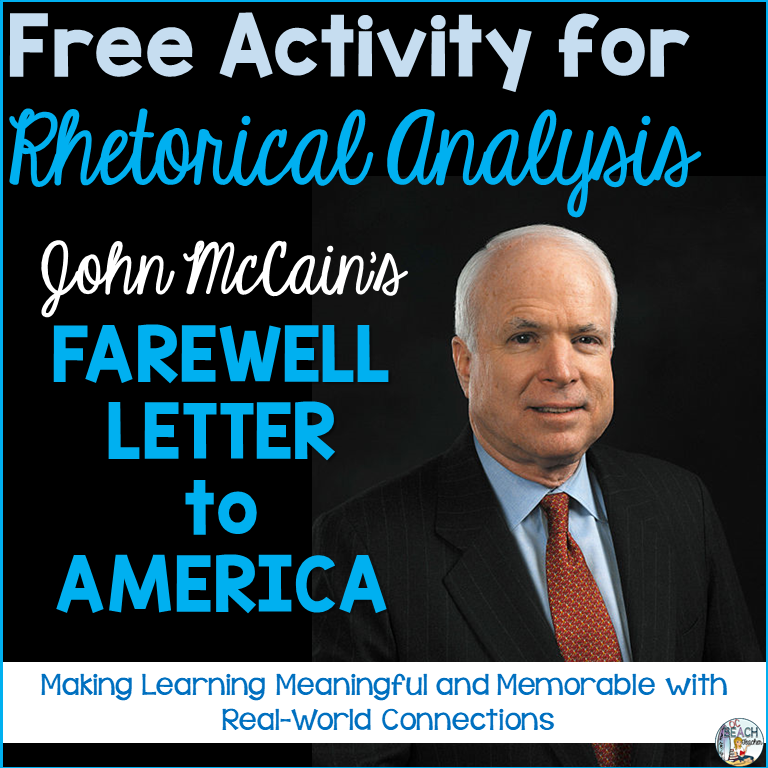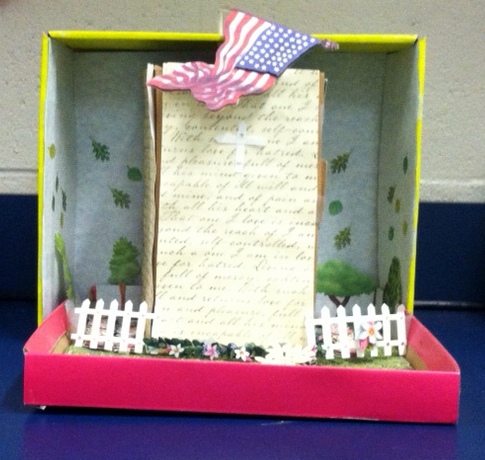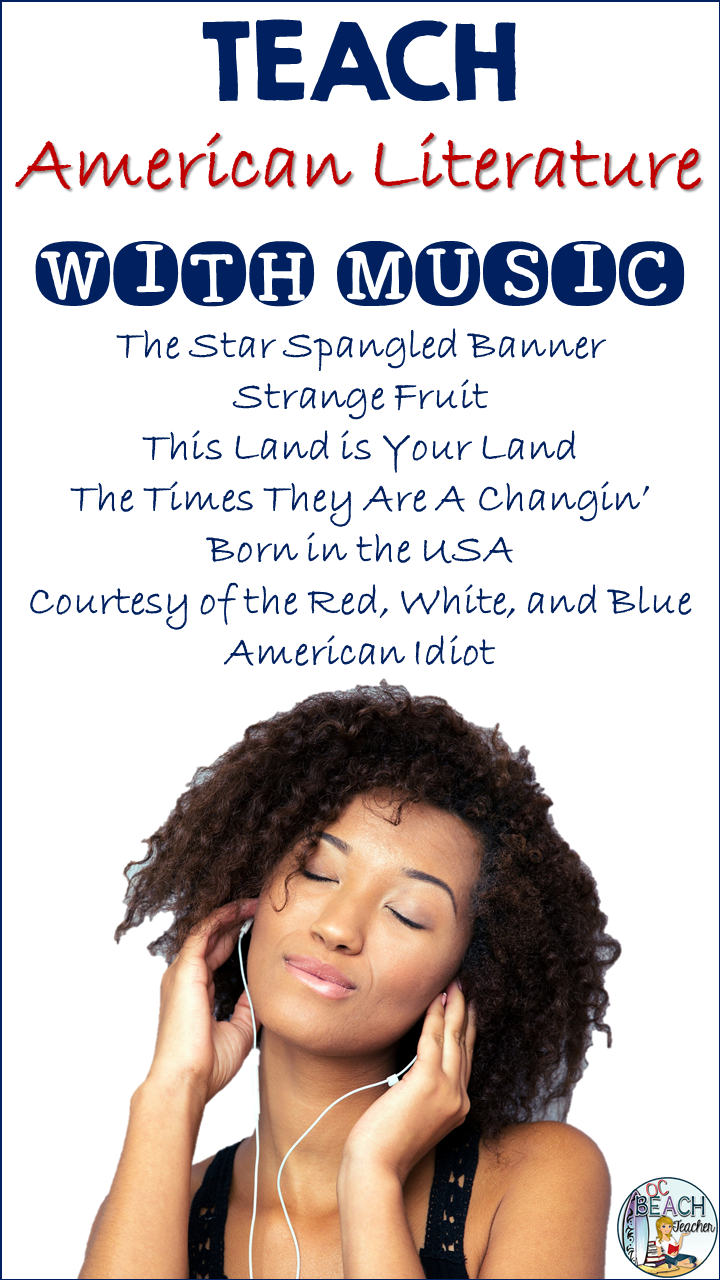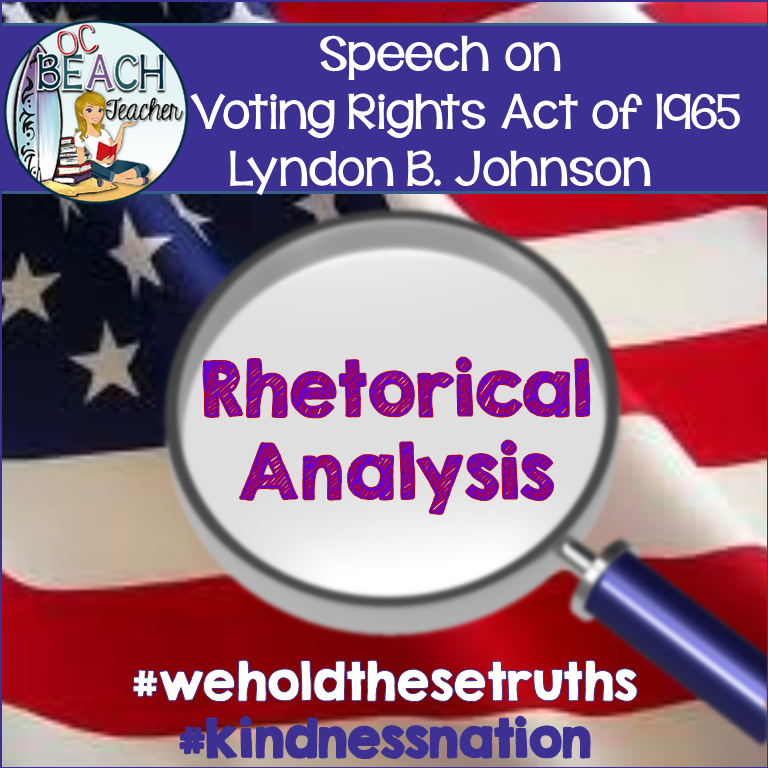Since I teach American Literature, every day in my classroom provides instruction for the founding ideals of our country and reflects the fact that we have not always lived up to those principles. United States history teaches us that the desire for American rights is also the desire for human rights and has been an on-going journey for many people in our country.
 Seminal United States documents and other classic texts communicate essential American themes. John McCain’s recent “Farewell Letter to America” makes teaching about equality, freedom, and diversity especially relevant. Recently, I’ve created a FREE Rhetorical Analysis lesson for teaching his letter. (Make sure to check for another freebie at the end of this post, too.)
Seminal United States documents and other classic texts communicate essential American themes. John McCain’s recent “Farewell Letter to America” makes teaching about equality, freedom, and diversity especially relevant. Recently, I’ve created a FREE Rhetorical Analysis lesson for teaching his letter. (Make sure to check for another freebie at the end of this post, too.)
1. Start with music.
Music reveals a lot about what is going on in the country at a particular time and also about the sentiments of the people. Song lyrics are much like poetry, so as students listen to and read lyrics, they can highlight words and lines that exemplify attitudes about America.
I use classic American songs from different genres and time periods and have often used the following:
Star Spangled
Banner by Francis Scott Key, Strange Fruit by Billie Holiday, This Land is Your Land Woody Guthrie, The Times They Are a Changin’ by Bob Dylan, Born in the USA by Bruce Springsteen, Courtesy of the Red, White, and Blue by Toby Keith, and American Idiot by Green Day.
After practicing with these songs in class, I ask students to bring their own song selections, which demonstrate themes about America. Frequently, I incorporate this lesson with others lessons for poetry and art as an introductory unit to American Literature.
This year I hope to add Childish Gambino’s song and video, “This is America.” I know it will create lively discussion and the lyrics will be excellent for text analysis.
2. Connect current issues to literature.
American literature is rife with stories and texts about the struggle for equality. One of my favorite lessons uses an excerpt from Frederick Douglass’s My Bondage and My Freedom with an article and video of Nobel Peace Prize recipient, Malala Yousafzai. My students always admire her bravery and are amazed that she is a teen like them. We watch her addressing the United Nations in 2013. Then through analysis of Douglass’s and Yousafzai’s messages, students note the connection between education, equality, and freedom.
3. Use powerful speeches.
Teach rhetorical literacy and let students learn history through the words of important American leaders. One of my favorites is Sojourner Truth’s “Ain’t I a Woman?”. She uses biblical allusions and rhetorical appeals such as ethos, logos, and pathos to fight for women’s rights. Here’s a three-minute video performance of the speech by Kerry Washington.
 |
| Students have designed memorials to honor the first responders and innocent victims of 9/11. |
Another significant speech is Abraham Lincoln’s “The Gettysburg Address.” It provides an excellent example of parallelism, and I use it to inspire students to write their own speeches. After reading Lincoln’s message to honor the soldiers who fought in The Battle of Gettysburg, I encourage students to honor veterans and other heroes by designing their own memorials and dedication speeches.
 |
| One former student designed her memorial and wrote her speech to honor Trayvon Martin. |
Last year I added Lyndon B. Johnson’s Speech to Congress on the Voting Rights Act of 1965. To help students gain a stronger understanding of the argument in the speech, I created this free rhetorical analysis graphic organizer to accompany our reading of it.
American Rhetoric.com is a website with many more resources for significant speeches.
Are you interested in more great lessons for American Literature? Then you might want to check out my “Beyond the Worksheet” American Literature Curriculum Bundle. It has over 20 weeks of instructional materials and a thematic pacing guide!
Do you have more ideas for teaching the founding ideals of our democracy? How have you collaborated with other content area teachers to infuse these principles into your instruction? Please share in the comments.








13 Comments
Love your blog post…. these are such great ideas!
Thank you!
Love to find great lessons on rhetoric! It's such an important skill for our students to learn! Thank you!
Every since our state adopted CCSS, I've developed more lessons for teaching rhetoric. With our recent election, I think it's more important than ever for students to have good critical reading skills.
Great ideas, Kim. I love making connections between lit and current events, too. My students are currently finding plenty to connect with Animal Farm :<. Thanks for the great ideas!
I can only imagine all of the connections that you can make with Animal Farm!
You are a teacher after my own heart–I love that you connect the past with the present, analyze rhetoric, and bring music into the classroom.
I try my best to make learning relevant and engaging to students. I'm so happy to know that you can relate!
Thank you for sharing such a variety of great ideas with us. I love the examples you used to help connect literature with current events for your students.
Thanks, Stephanie. Every time I watch the news, I think of many connections!
I LOVE using music as a "hook" and then to combine it with great speeches – it's so powerful! Thanks for the great ideas!
I always try to have a good "hook" for my lessons. I think it works wonders for getting students interested in their learning!
I also teach American Lit, and these ideas and resources you've shared will be ideal additions to the curriculum. Thank you so much!